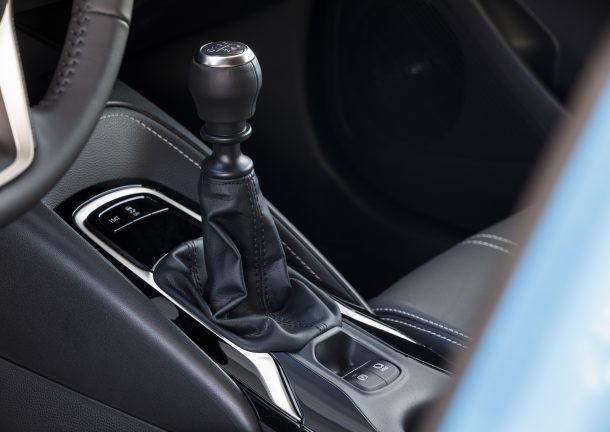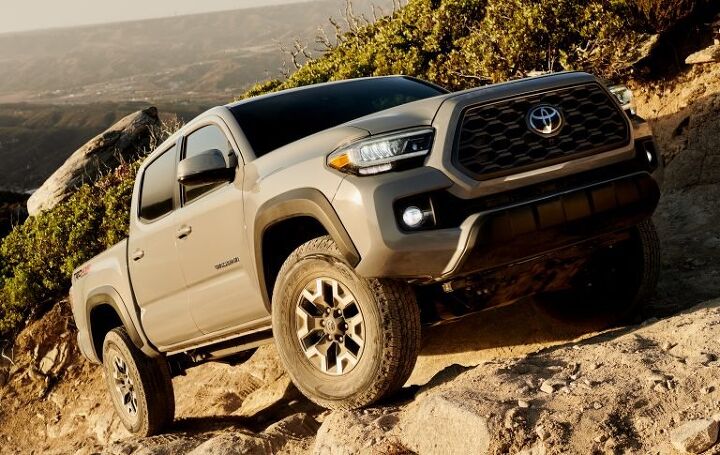Here's How Many Manual Transmission-equipped Vehicles Toyota Sold Last Year

As much as it pains us to say it, manual transmissions are on their way out. While car enthusiasts bemoan the matter incessantly, as we just did, the reality is that most drivers aren’t interested in owning something with a stick. It’s gotten to a point where many automakers no longer offer vehicles with a manual transmission, or just keep one high-performance model around with an optional clutch pedal just to appease a subset of their customer base.
Toyota, which sells more manual models than most, recently spilled its guts to CarBuzz after the outlet requested the company reveal the percentage of its new cars still sold with a manual while attending the Supra launch event.
The resulting figures are about what you’d expect.
At the time of this writing, Toyota still sells manual variants of the Yaris, Corolla, 86 coupe, and Tacoma pickup — albeit not in every trim. However, the world’s most prolific automobile (the Corolla) saw less than 1 percent of U.S. buyers opt for a manual transmission in 2018. Toyota spokesperson Nancy Hubbell said that breaks down to roughly 2,800 vehicles. “It’s not very high for the Corolla as a whole, but it is better if you just count the hatchback,” Hubbell said, adding that roughly 15 percent were sold with a stick.
Once again, hatchback owners prove themselves to be the real automotive enthusiast — or perhaps this author’s disgusting bias is showing. Still, it should be said that Toyota intentionally positioned the new-for-2019 hatch as the more performance-oriented choice, even if we were to go by looks alone. It’s possible the company could boost those manual numbers a bit if it found a way to run with the hatch’s diet-performance image while adding some power, but without breaking the bank.
The 86, which you might expect to have a more even split, as it is quite literally an enthusiast car, only saw a third of its brethren shipped with a stick in 2018. Considering that a six-speed manual was supposed to be part of its overall appeal, and that stick-shift models actually boast five additional horsepower, this was quite the surprise.
Meanwhile, the Yaris and Tacoma saw around 5 percent of U.S. customers choosing to row their own gears in 2018. That breaks down to about 12,280 pickups and just 97 examples of the itty-bitty hatchback.
With that in mind, it should be no surprise as to why Toyota decided against providing the Yaris with a manual option for the 2020 model year and has already relegated clutch pedals to well-equipped Tacoma TRDs with the beefier V6.
Yeah, yeah. We know you hate it. But the manual is living on borrowed time, continuing to lose prominence as fewer and fewer adults bother to learn how to drive stick. We’re just glad some manufacturers still bothering providing them, as there’s not much of a financial case to be made anymore.
[Images: Toyota Motor Corp.]

A staunch consumer advocate tracking industry trends and regulation. Before joining TTAC, Matt spent a decade working for marketing and research firms based in NYC. Clients included several of the world’s largest automakers, global tire brands, and aftermarket part suppliers. Dissatisfied with the corporate world and resentful of having to wear suits everyday, he pivoted to writing about cars. Since then, that man has become an ardent supporter of the right-to-repair movement, been interviewed on the auto industry by national radio broadcasts, driven more rental cars than anyone ever should, participated in amateur rallying events, and received the requisite minimum training as sanctioned by the SCCA. Handy with a wrench, Matt grew up surrounded by Detroit auto workers and managed to get a pizza delivery job before he was legally eligible. He later found himself driving box trucks through Manhattan, guaranteeing future sympathy for actual truckers. He continues to conduct research pertaining to the automotive sector as an independent contractor and has since moved back to his native Michigan, closer to where the cars are born. A contrarian, Matt claims to prefer understeer — stating that front and all-wheel drive vehicles cater best to his driving style.
More by Matt Posky
Latest Car Reviews
Read moreLatest Product Reviews
Read moreRecent Comments
- Probert They already have hybrids, but these won't ever be them as they are built on the modular E-GMP skateboard.
- Justin You guys still looking for that sportbak? I just saw one on the Facebook marketplace in Arizona
- 28-Cars-Later I cannot remember what happens now, but there are whiteblocks in this period which develop a "tick" like sound which indicates they are toast (maybe head gasket?). Ten or so years ago I looked at an '03 or '04 S60 (I forget why) and I brought my Volvo indy along to tell me if it was worth my time - it ticked and that's when I learned this. This XC90 is probably worth about $300 as it sits, not kidding, and it will cost you conservatively $2500 for an engine swap (all the ones I see on car-part.com have north of 130K miles starting at $1,100 and that's not including freight to a shop, shop labor, other internals to do such as timing belt while engine out etc).
- 28-Cars-Later Ford reported it lost $132,000 for each of its 10,000 electric vehicles sold in the first quarter of 2024, according to CNN. The sales were down 20 percent from the first quarter of 2023 and would “drag down earnings for the company overall.”The losses include “hundreds of millions being spent on research and development of the next generation of EVs for Ford. Those investments are years away from paying off.” [if they ever are recouped] Ford is the only major carmaker breaking out EV numbers by themselves. But other marques likely suffer similar losses. https://www.zerohedge.com/political/fords-120000-loss-vehicle-shows-california-ev-goals-are-impossible Given these facts, how did Tesla ever produce anything in volume let alone profit?
- AZFelix Let's forego all of this dilly-dallying with autonomous cars and cut right to the chase and the only real solution.






































Comments
Join the conversation
It is probably cheaper to make a CVT than a manual. My problem is not so much with how the CVT equipped vehicle drives as with the long term reliability and the cost to replace a CVT. I prefer manuals and understand that their days are limited but my concern is most vehicles are going to CVTs and how will these hold up in the long run. Hopefully the CVTs will become more reliable. Nissan has the worst of the CVTs.
I love my manual Tacoma! I also love that its so rare.